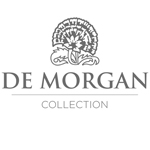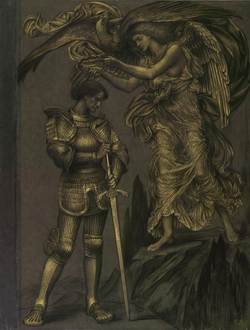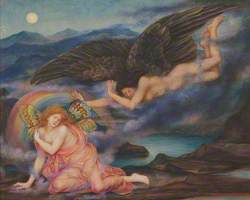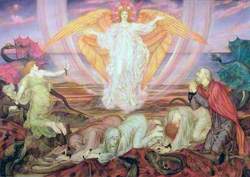How you can use this image
This image can be used for non-commercial research or private study purposes, and other UK exceptions to copyright permitted to users based in the United Kingdom under the Copyright, Designs and Patents Act 1988, as amended and revised. Any other type of use will need to be cleared with the rights holder(s).
Review the copyright credit lines that are located underneath the image, as these indicate who manages the copyright (©) within the artwork, and the photographic rights within the image.
The collection that owns the artwork may have more information on their own website about permitted uses and image licensing options.
Review our guidance pages which explain how you can reuse images, how to credit an image and how to find images in the public domain or with a Creative Commons licence available.
Notes
Add or edit a note on this artwork that only you can see. You can find notes again by going to the ‘Notes’ section of your account.
Evelyn De Morgan painted several subjects using medieval themes and stylistic devices which had been made popular by the Pre-Raphaelites. These paintings included 'Queen Eleanor and the Fair Rosamund' and 'The Hour Glass'. The female figure in the painting has often been miscategorised as the devious witch from fairy stories, not least by Mrs Stirling (Evelyn De Morgan's sister) who described the painting in her 'Catalogue of the De Morgan Collection of Pictures and Pottery' as follows: 'A witch in bright yellow, with a callous, cruel face, mixing a potion to upset the lovers who are seen on the terrace in the distance. Along the shelf by her side are books upon Black Magic, one of which is inscribed "Paracelsus".' However, more correctly the painting should be categorised within De Morgan's series of allegoric paintings on the progress of the soul towards enlightenment.
Paracelsus was a Renaissance physician, botanist, alchemist, astrologer, and general occultist. Agrippa Von Nettesheim was a sixteenth-century physician and philosopher who wrote a treatise on alchemy and magic ('De occulta philosophia libri tres' – Three Books of Occult Philosophy). However, as one of the leading experts of his century on this spiritual and ancient wisdom, he wished to purge magic of the superstitious and dangerous rituals of medieval witches – instead of holding with theosophical principals that religion is a tool to help humanities evolution to greater perfection.
De Morgan’s adherence to alchemical colour symbolism as promoted by Paracelsus also sheds light on her intent. In this system, the four colours which mark the progressive stages towards spiritual enlightenment are black – the material state of guilt, sin, and death; white – the early stages or purification; red, then yellow – towards the gold of salvation. These stages parallel the Spiritualist ideas regarding the development of the spirit which involves a series of steps from the death of the profane, through purification and spiritual suffering toward the final goal of a harmonious union of opposites – represented in this case by the courting couple seen through the window. However, the ultimate union is the synthesis of bodily into spiritual nature – as represented by the wisdom seeking alchemist herself. Accordingly, we see in the painting the black of the cat – an alchemical creature of the night, connected to prime matter (and ironic comment on witches); the red lions on the tapestry – a symbol for Christianity, strength and wisdom and finally the dominant colour within the painting – the golden yellow of the alchemist’s robes.
Thus whilst the painting is stylistically in tune with some of De Morgan’s late Pre-Raphaelite and Symbolist peers, Evelyn’s narrative is distinctly independent and allegorical. She uses her spiritualist vocabulary to subvert and renegotiates traditional roles and stereotypes of women, providing instead a strong, powerful, skilled intelligent protagonist, capable of reaching the enlightenment she herself sought.
Interpretation from Elise Lawton Smith’s 'Evelyn Pickering De Morgan and the Allegorical Body', Fairleigh Dickinson University, Madison, 2002, pp. 107–108.
Title
The Love Potion
Date
1903
Medium
oil on canvas
Measurements
H 104.1 x W 52 cm
Accession number
P_EDM_0035
Acquisition method
gift
Work type
Painting










